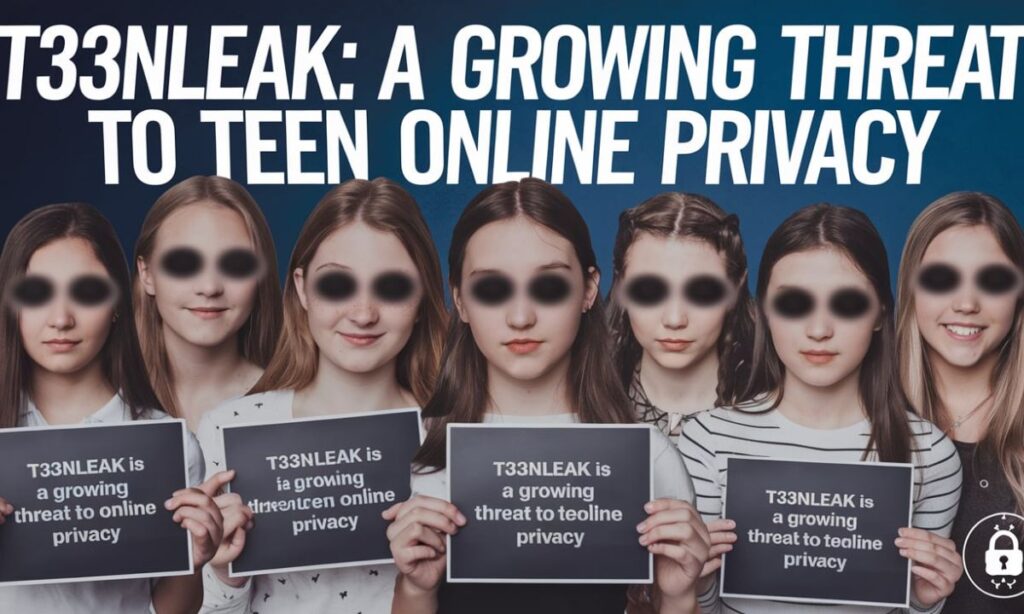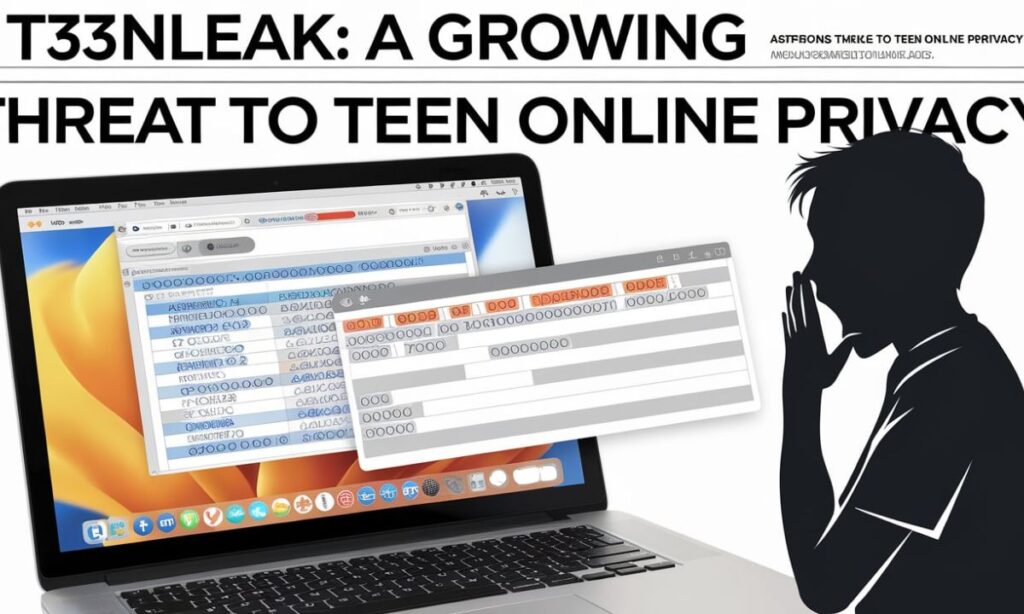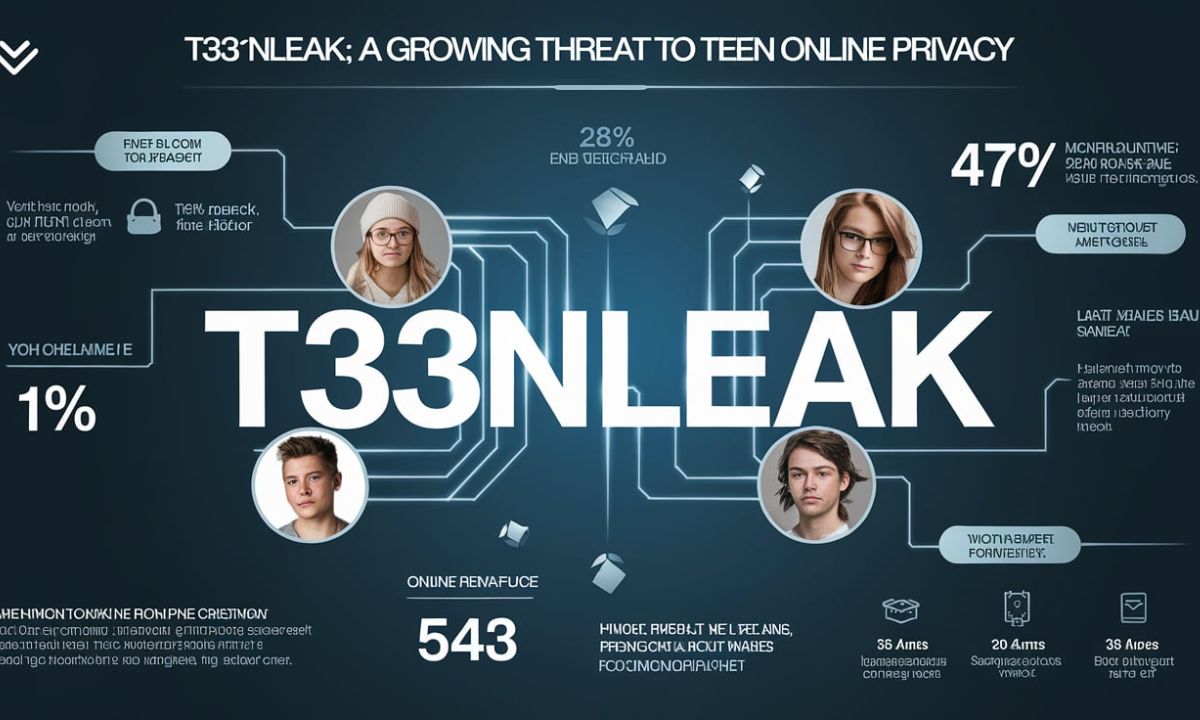In today’s digital age, the intersection of privacy and security has become a pressing concern, especially among teenagers. T33nleak refers to the unauthorized exposure of private information, often affecting adolescents who are navigating the complexities of online life. This article delves into the implications of T33nleak, its emotional and social impact, and strategies for prevention.
What is T33nleak?
T33nleak is a term that describes incidents where personal information or unauthorized content is shared without consent, primarily involving teenagers. This can include everything from private messages and photos to sensitive data that can lead to identity theft or cyberbullying. The phenomenon has been exacerbated by the rise of social media platforms, where oversharing is common and privacy settings are often lax.
Understanding the Risks
The risks associated with T33nleak are significant. Adolescents may not fully grasp the consequences of sharing personal information online. This lack of understanding can lead to severe repercussions, including emotional distress and social isolation.
- Unauthorized Content Sharing: This includes sharing images or messages that were intended to remain private.
- Digital Privacy Breach: When personal data is exposed, it can lead to identity theft and various forms of online harassment.
| Risk Factor | Description |
| Unauthorized Sharing | Sharing content without consent |
| Digital Privacy Breach | Unauthorized exposure of personal data |
The Rise of T33nleak
The rise of T33nleak can be attributed to several factors. The increasing use of smartphones and social media has made it easier for teenagers to share information, often without considering the potential consequences.
Social Media Influence
Social media platforms encourage sharing and interaction, which can lead to oversharing. Teenagers often seek validation through likes and comments, which can drive them to share more personal information than they should.
- Adolescent Digital Behavior: Teens often feel compelled to share their lives online.
- Peer Pressure: The desire for social acceptance can lead to risky online behavior.
Technology and Accessibility
With technological advancements, the tools for capturing and sharing information have become more accessible. This includes everything from smartphones with high-quality cameras to apps that facilitate quick sharing.
- Gen Z Internet Use: This generation is particularly adept at using technology but may lack awareness of privacy risks.
- Digital Peer Pressure: Teens may feel pressured to conform to certain online behaviors, leading to increased risk.
| Contributing Factor | Description |
| Social Media Influence | Encourages sharing and oversharing |
| Technology Accessibility | Easy access to tools for capturing and sharing |
The Impact of T33nleak

The consequences of T33nleak extend beyond the immediate exposure of information. They can have profound emotional and social ramifications for affected individuals.
Emotional and Psychological Effects
The emotional fallout from T33nleak can be devastating. Victims may experience feelings of shame, anxiety, and depression as a result of their information being exposed.
- Cyber Trauma: Exposure to unauthorized content can lead to long-lasting psychological effects.
- Emotional Resilience: Building resilience is crucial for teens who have faced such experiences.
Social Consequences
The social implications of T33nleak can lead to bullying and ostracism. Teens may find themselves isolated from their peers due to the stigma associated with being a victim.
- Social Anxiety Online: Victims may develop anxiety about interacting on social platforms.
- Reputation Damage: Once information is shared online, it can be challenging to repair one’s reputation.
| Impact Area | Description |
| Emotional Effects | Feelings of shame and anxiety |
| Social Consequences | Bullying and isolation from peers |
Societal Implications
The societal implications of T33nleak extend to broader issues of privacy and security. As more young people fall victim to these breaches, the need for robust protections becomes increasingly crucial.
Legal and Ethical Considerations
The rise of T33nleak raises important questions about digital rights and legal accountability. Many jurisdictions are still catching up with the rapid pace of technological development.
- Online Privacy Laws: There is a growing need for laws that protect minors online.
- Digital Consent: Understanding and enforcing consent in digital interactions is vital.
The Role of Education
Education plays a crucial role in preventing T33nleak. Teaching teens about digital privacy and responsible online behavior can help reduce incidents of information leakage.
- Digital Literacy for Teens: Programs aimed at improving digital literacy can empower young people to make safer choices online.
- Cyber Hygiene Practices: Encouraging good cybersecurity habits can help protect personal data.
| Societal Impact | Description |
| Legal Considerations | Need for laws protecting minors |
| Educational Role | Importance of teaching digital literacy |
Preventing T33nleak: Strategies for Individuals
Preventing T33nleak requires proactive measures from individuals. Here are some strategies for teens to safeguard their information.
1. Educate Yourself and Others
Understanding the risks associated with sharing personal information online is the first step towards prevention.
- Workshops and Resources: Attend workshops on online safety and digital privacy.
- Peer Discussions: Engage in conversations with friends about the importance of protecting personal information.
2. Use Privacy Settings to Control Information Sharing
Most social media platforms offer privacy settings that allow users to control who can see their content.
- Review Privacy Settings: Regularly check and update privacy settings on social media accounts.
- Limit Audience: Share content only with trusted friends and family.
3. Think Before You Share
Before posting anything online, consider the potential consequences.
- Ask Yourself: Is this information safe to share? How might it be perceived by others?
- Delay Posting: Take a moment to think twice about sharing sensitive content.
4. Be Cautious with Friend Requests
Not everyone who sends a friend request has good intentions.
- Verify Identities: Before accepting requests, ensure you know the person.
- Use Mutual Friends: Check if you have mutual friends as a way to verify authenticity.
5. Report and Block
If you encounter suspicious activity or feel threatened, take action immediately.
- Report Abuse: Use platform tools to report harassment or inappropriate content.
- Block Offenders: Protect your space by blocking individuals who make you uncomfortable.
| Individual Strategy | Description |
| Educate Yourself | Learn about online risks and safety |
| Use Privacy Settings | Control who sees your information |
| Think Before You Share | Consider the impact of your posts |
Preventing T33nleak: Strategies for Platforms

While individuals play a critical role in preventing T33nleak, platforms must also take responsibility. Here are some strategies for social media platforms to enhance user safety.
1. Enhanced Privacy Features
Social media platforms should prioritize user privacy by implementing robust privacy features.
- Default Settings: Set stronger privacy settings as defaults for new users.
- User Education: Provide clear information on how to use privacy features effectively.
2. Education and Awareness Campaigns
Platforms can run campaigns to raise awareness about the importance of privacy and safe sharing practices.
- Informative Content: Create blog posts, videos, or webinars that educate users on digital safety.
- Community Engagement: Foster discussions within the platform about privacy risks and prevention.
3. Stronger Enforcement of Policies
Enforcement of community guidelines is crucial for maintaining a safe online environment.
- Proactive Monitoring: Use AI tools to detect and address violations quickly.
- Transparent Reporting: Clearly communicate the process for reporting abuse and the actions taken.
4. Collaboration with Law Enforcement
Platforms should work with law enforcement to address severe cases of online harassment and abuse.
- Emergency Protocols: Develop protocols for reporting severe threats and collaborating with authorities.
- Legal Compliance: Ensure that platforms comply with local laws regarding digital privacy and security.
| Platform Strategy | Description |
| Enhanced Privacy Features | Improve user privacy settings and defaults |
| Awareness Campaigns | Educate users on privacy risks |
| Strong Policy Enforcement | Ensure community guidelines are actively enforced |
FAQs About T33nleak
1. What is T33nleak?
T33nleak refers to the unauthorized exposure of personal information and content among teenagers.
2. How can I protect myself from T33nleak?
Educate yourself about online privacy, use privacy settings, and think before sharing personal information.
3. What are the emotional effects of T33nleak?
Victims may experience anxiety, shame, and social isolation due to unauthorized exposure of their information.
4. How do social media platforms contribute to T33nleak?
Social media platforms can facilitate oversharing and lack adequate privacy features for users.
5. What should I do if I encounter T33nleak?
Report the incident to the relevant platform and consider blocking any offenders.
6. Are there laws protecting against T33nleak?
Yes, various online privacy laws exist, but enforcement and awareness can vary by region.
7. How can platforms better prevent T33nleak?
By enhancing privacy features, educating users, and enforcing community guidelines more rigorously.

Conclusion
T33nleak represents a significant challenge in the realms of digital privacy and security, particularly for teenagers. As technology continues to evolve, so too do the risks associated with online sharing. Understanding these risks is crucial for both individuals and platforms.
By implementing preventative strategies, such as education, enhanced privacy features, and community engagement, we can create a safer online environment. As we navigate the complexities of the digital world, it is essential to prioritize the protection of personal information and promote responsible digital behavior.
Read more informationhttps://verbvictories.online/
Visit my other websitehttps://techyspirtz.com

I am David a content writer and seo expert with 2years experinces. I have Already BBC News Website.












